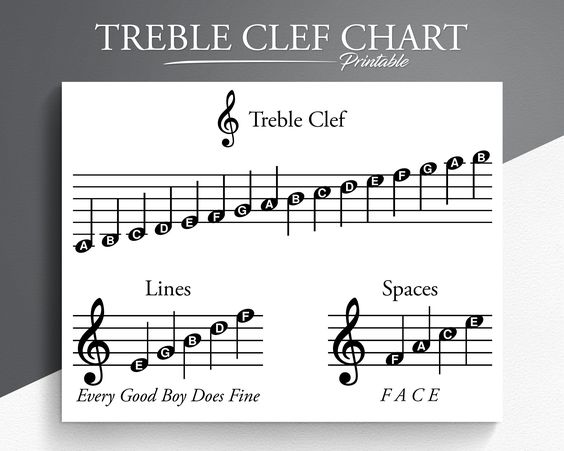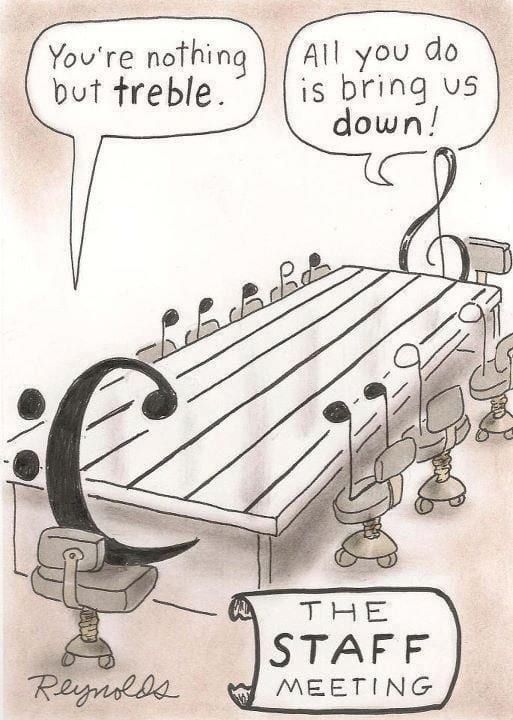Introduction
Are you interested in learning to play a musical instrument? If so, you’ll need to learn how to read music. And one of the most important things you’ll need to learn is the treble clef.
The treble clef is the symbol that tells you which notes are on the lines and spaces of the staff. It’s also called the G clef, because the two loops of the clef curl around the G line.
In this blog post, we’ll give you a basic introduction to the treble clef. We’ll cover the following topics:
- What is the treble clef?
- How to read the lines and spaces of the staff
- Tips for memorizing the notes
- How to practice reading music
What is the treble clef?
The treble clef is a symbol that looks like a fancy G. It is used to indicate that the notes on the staff are higher in pitch than the notes in the bass clef.
The two loops of the clef curl around the G line, which is the second line from the bottom of the staff. The top line of the clef is called the F line, and the bottom line is called the E line.
How to read the lines and spaces of the staff
The staff is made up of five lines and four spaces. The notes on the lines are named after the first letter of the word “Every Good Boy Deserves Fudge.” The notes in the spaces are named after the word “FACE.”
- Lines: E, G, B, D, F
- Spaces: F, A, C, E
Tips for memorizing the notes


There are a few things you can do to help you memorize the notes on the treble clef.
- Use mnemonics. The mnemonics “Every Good Boy Deserves Fudge” and “FACE” can help you remember the names of the lines and spaces.
- Sing the notes. Singing the notes can help you to internalize their sounds.
- Play an instrument. Playing an instrument is a great way to learn to read music.
How to practice reading music
There are a few things you can do to practice reading music.
- Start with simple pieces. Don’t try to tackle Bach right away! Start with some easy songs or exercises.
- Use a metronome. A metronome can help you keep time.
- Record yourself. Recording yourself can help you to identify areas where you need to improve.
With a little practice, you’ll be reading music like a pro in no time!


Conclusion
I hope this blog post has given you a basic understanding of the treble clef. If you’re interested in learning more about music theory, there are many great resources available online and in libraries.
And remember, the most important thing is to have fun! Learning to read music should be an enjoyable experience.
Additional tips
- In addition to the tips mentioned in the blog post, here are a few other things you can do to help you learn to read music:
- Find a good teacher. A good teacher can provide you with personalized instruction and feedback.
- Join a music group. Playing music with others is a great way to stay motivated.
- Be patient. It takes time to learn to read music. Don’t get discouraged if you don’t see results immediately.
With a little effort, you’ll be reading music like a pro in no time!
I hope this blog post is helpful! Please let me know if you have any questions.

